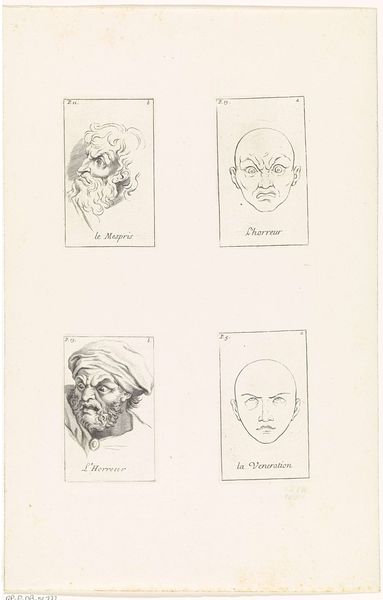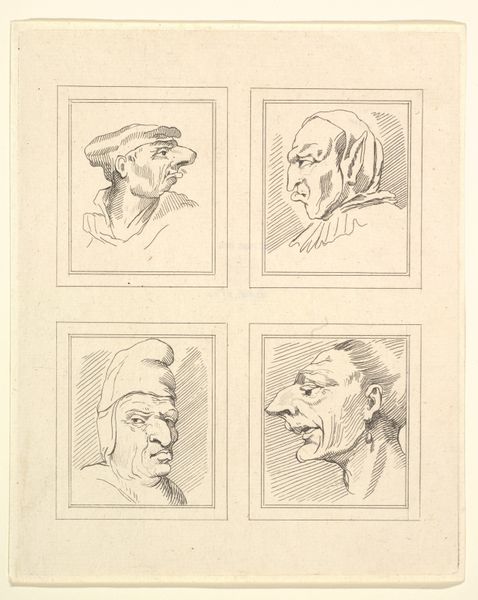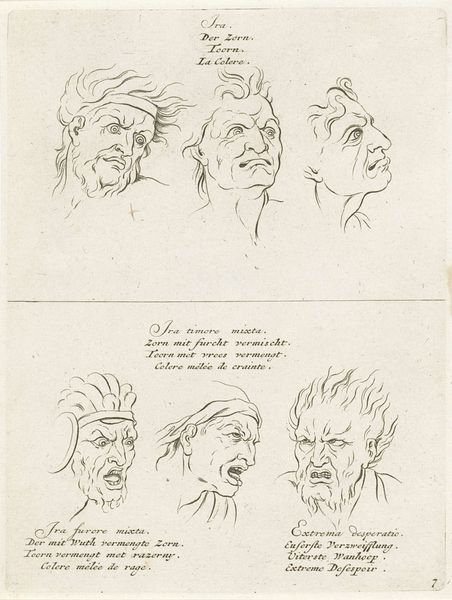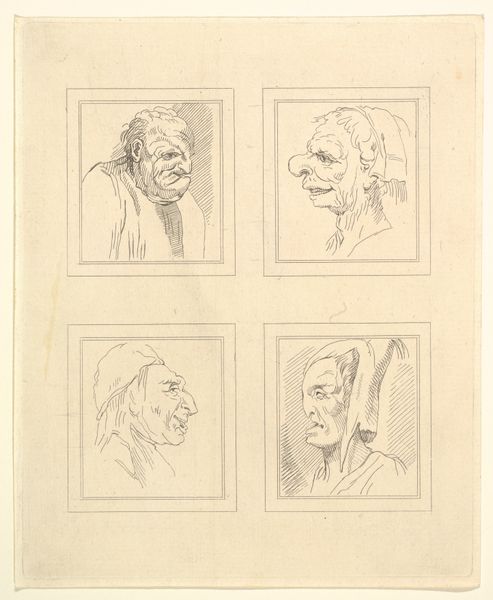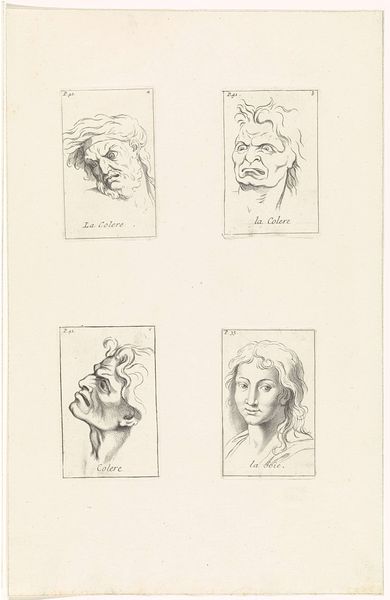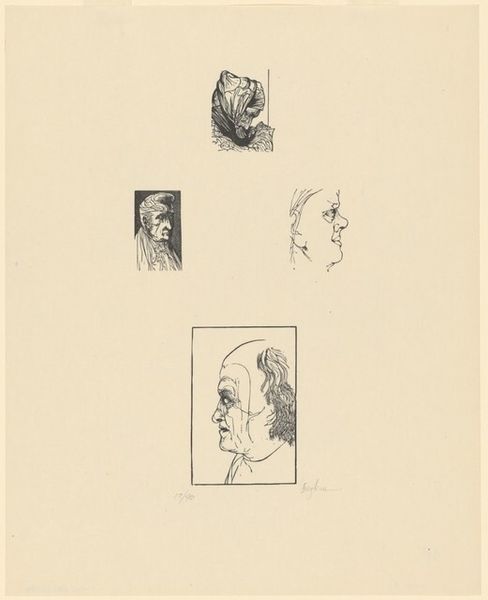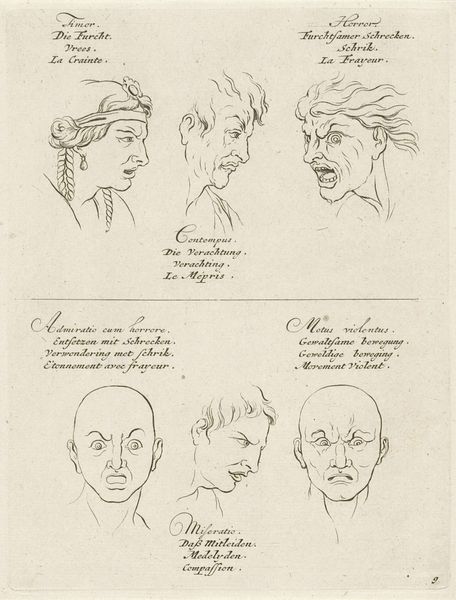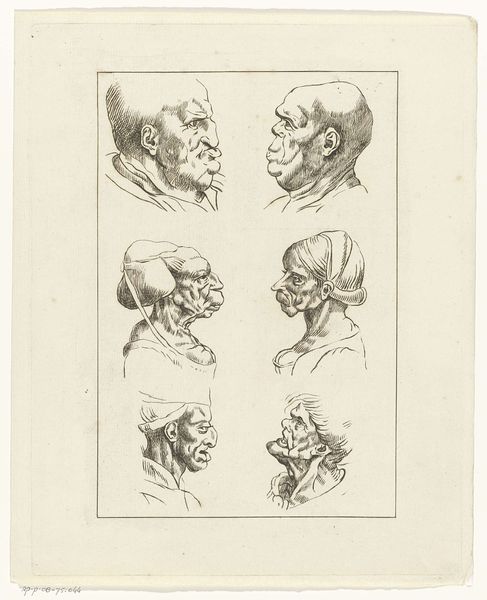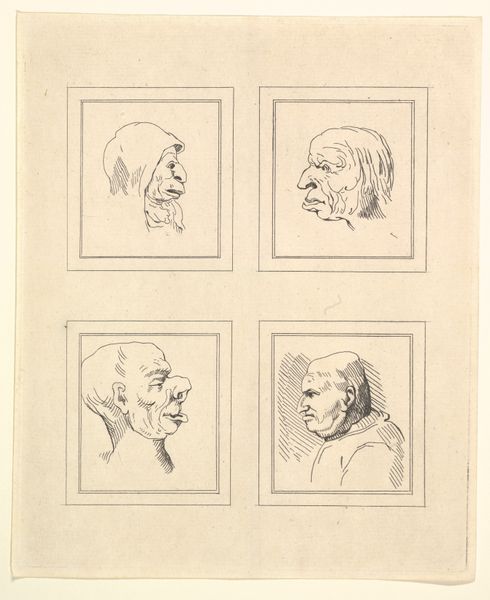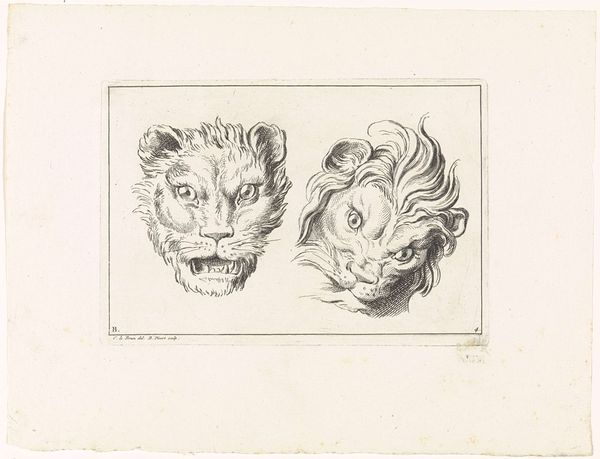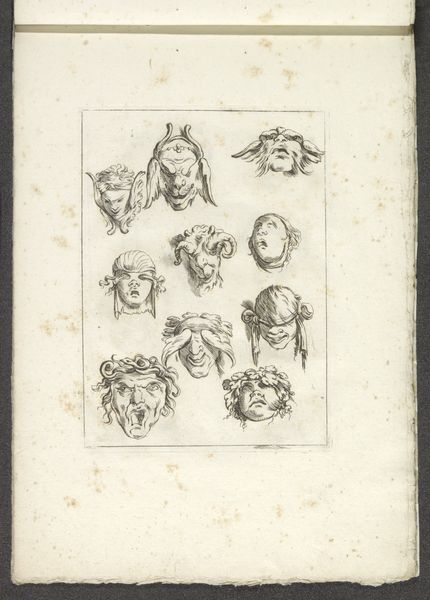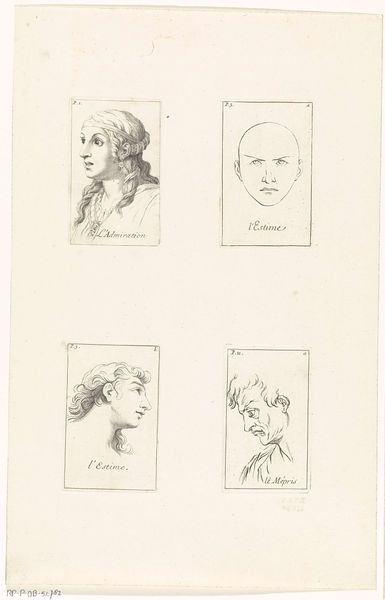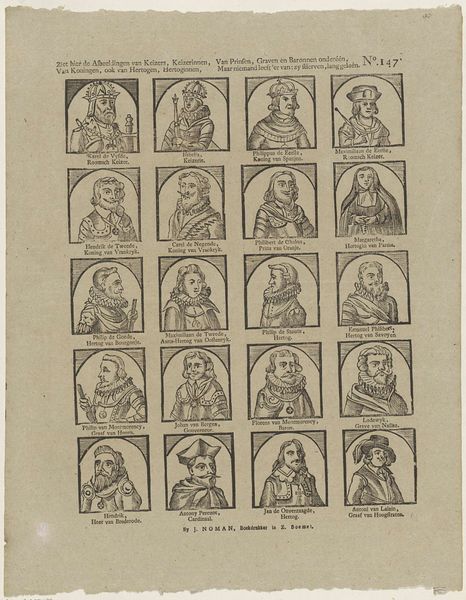
drawing, ink, pen
#
portrait
#
drawing
#
light pencil work
#
quirky sketch
#
baroque
#
figuration
#
personal sketchbook
#
ink
#
idea generation sketch
#
ink drawing experimentation
#
pen-ink sketch
#
sketchbook drawing
#
pen
#
genre-painting
#
history-painting
#
storyboard and sketchbook work
#
academic-art
#
sketchbook art
#
miniature
#
initial sketch
Dimensions: height 96 mm, width 60 mm, height 98 mm, width 55 mm, height 97 mm, width 56 mm, height 95 mm, width 59 mm, height 366 mm, width 234 mm
Copyright: Rijks Museum: Open Domain
Editor: So, here we have "Voorstellingen van verschillende emoties," or "Representations of different emotions," by Bernard Picart, made around 1711. It’s a pen and ink drawing from the Rijksmuseum. It's striking how each face captures such distinct, raw feelings. What do you make of this study of emotions? Curator: It’s a fascinating document. Each emotion depicted carries a historical and cultural weight. Look at "Extreme Despair." The wild hair, the contorted face. Despair, particularly in the Baroque era, wasn't just sadness; it was a kind of spiritual crisis, a wrestling with the divine. And then, "Colere merlée de rage" – anger mixed with rage – the helmet alludes to classical antiquity, perhaps connecting uncontrolled anger with fallen empires or mythological figures consumed by fury. What does the use of the helmet evoke for you? Editor: It feels almost theatrical, like anger displayed on a grand, historical scale rather than a personal one. Does that link to the tradition of history painting perhaps? Curator: Precisely! And notice how the captions themselves guide our interpretation. Picart isn't just drawing faces; he's providing a lexicon of emotional expression rooted in a very specific cultural understanding. How might these representations have functioned as symbols, influencing behaviors and performances of emotion within that society? Editor: I suppose they could have served as templates or archetypes, influencing how people understood and even performed these emotions. Like, "this is what rage looks like", shaping people's behaviors. I had never considered that someone would learn emotion rather than experience it. Curator: Yes! And it highlights the fascinating intersection of art, psychology, and social performance. Art doesn't just reflect emotions; it helps construct them within a culture. This piece helps decode the iconography of emotions from a period that helped define what is carried by art. Editor: This was eye-opening; seeing how historical context infuses not just the subjects but the very understanding and presentation of human feelings. Curator: Indeed, it encourages us to look beyond the surface and understand the lasting influence and historical baggage behind common symbology.
Comments
No comments
Be the first to comment and join the conversation on the ultimate creative platform.
